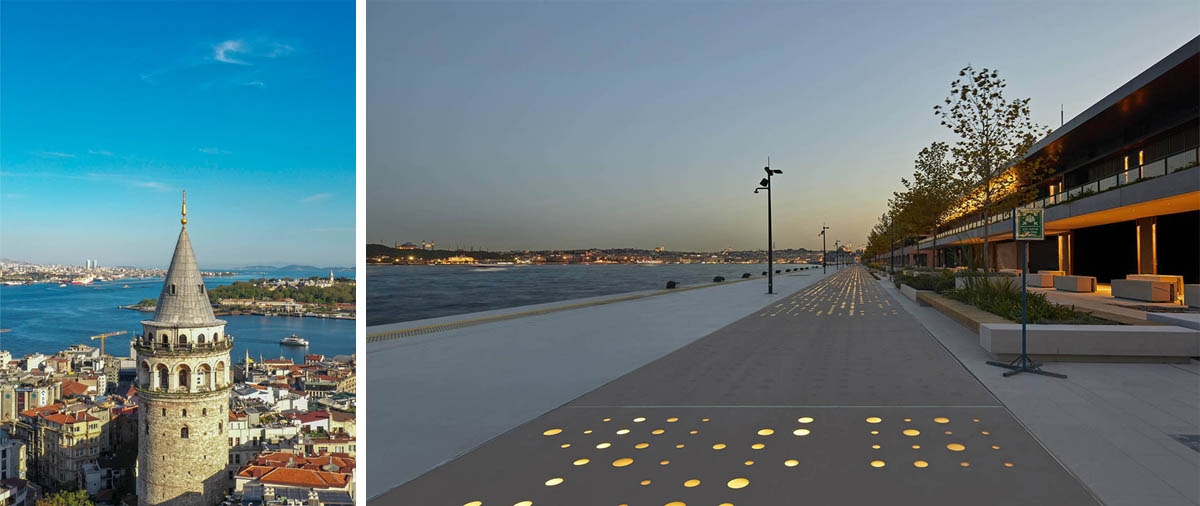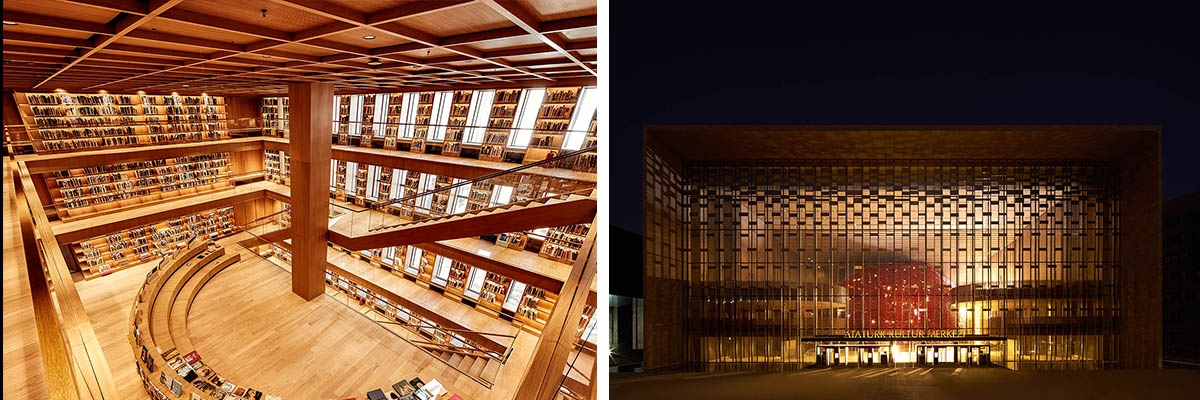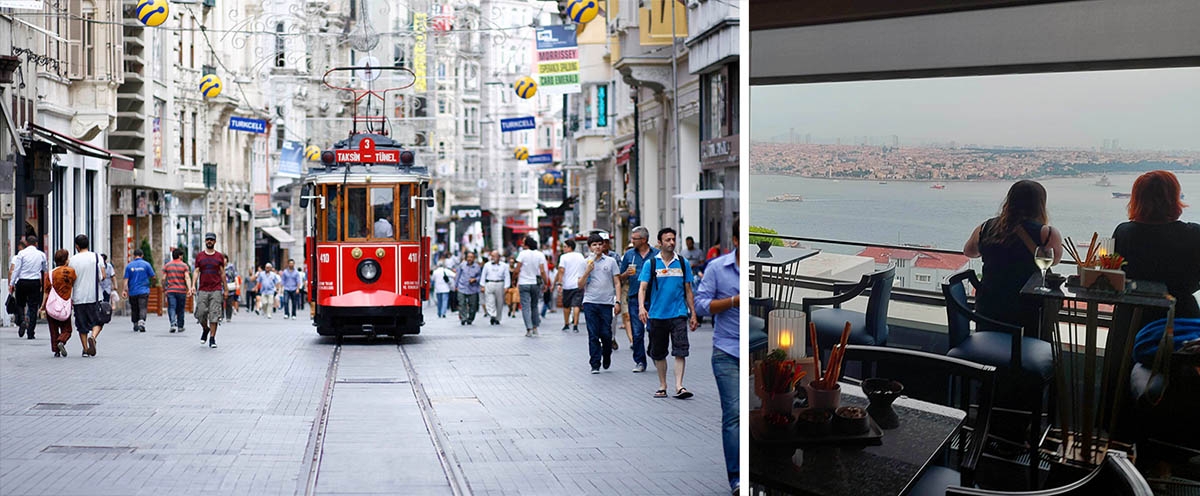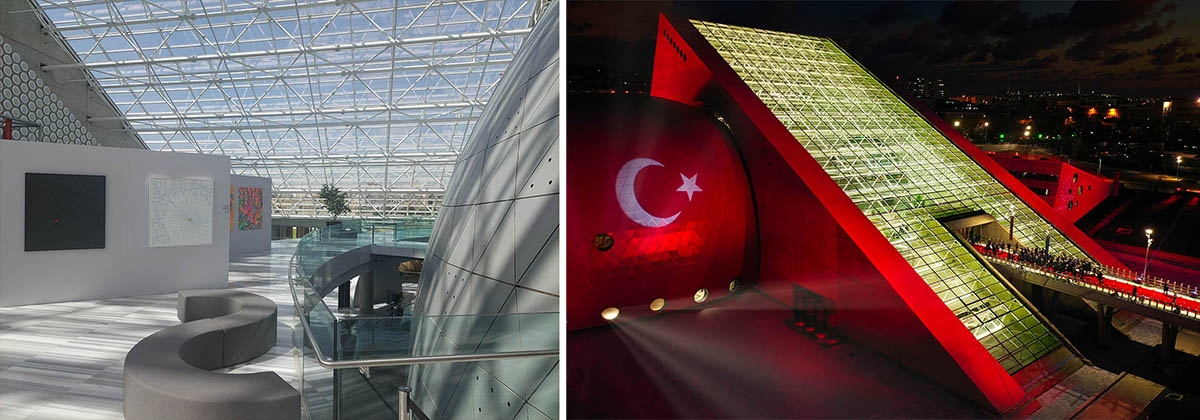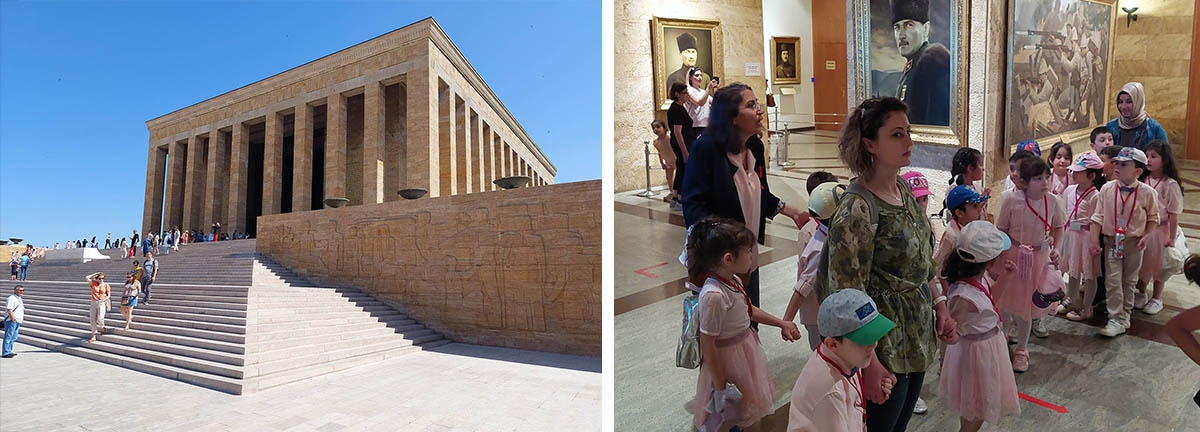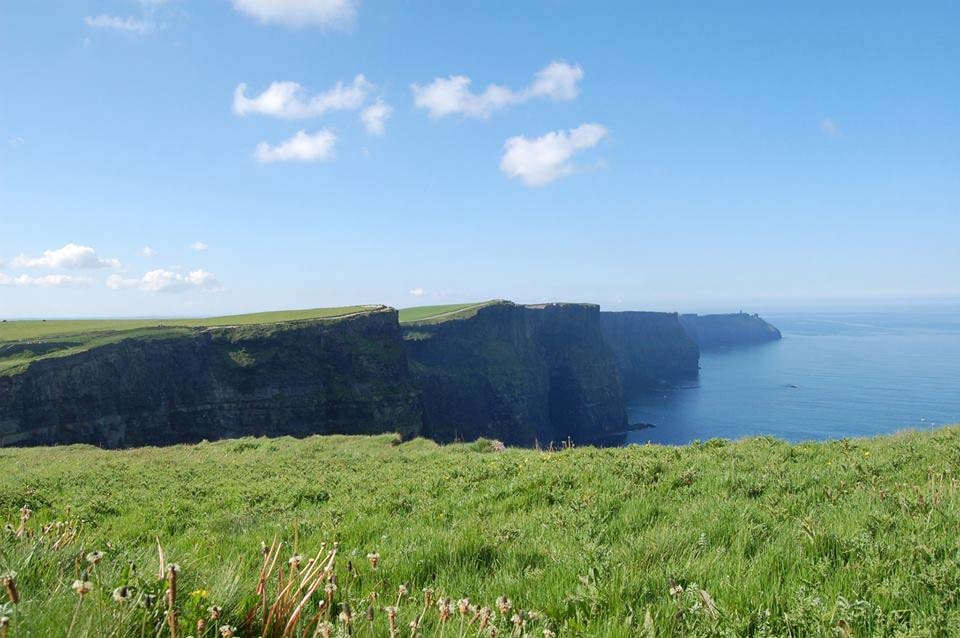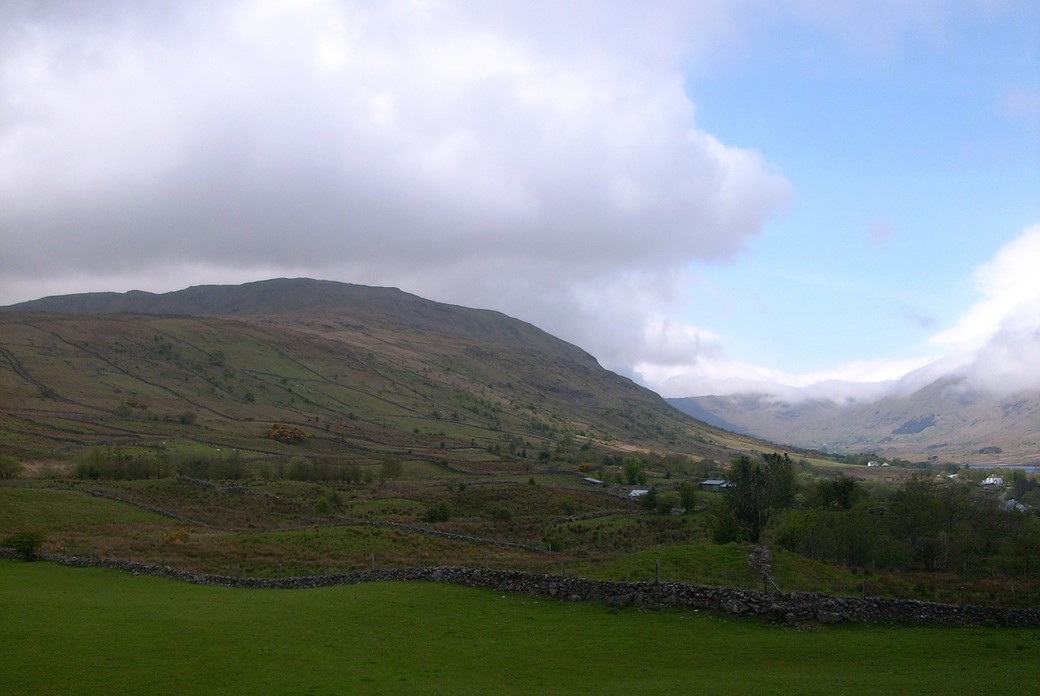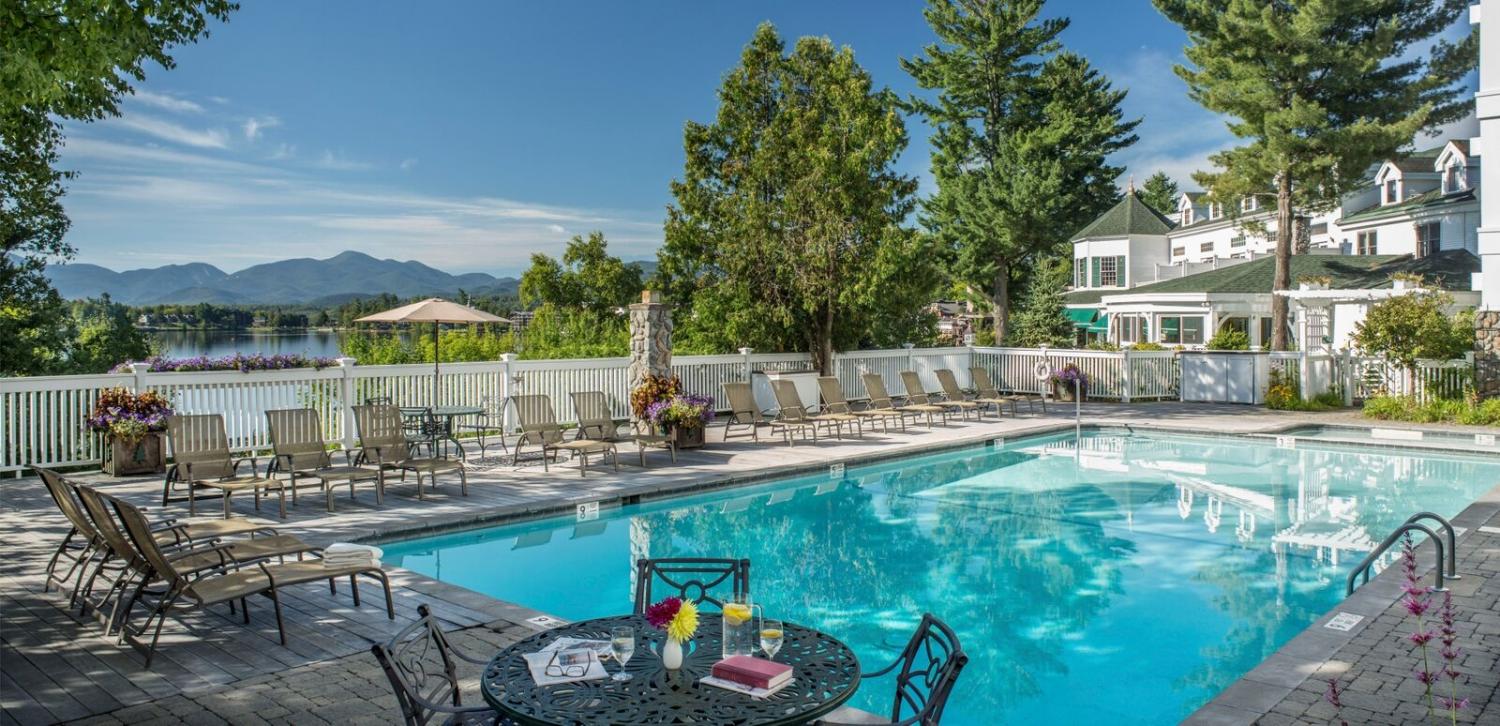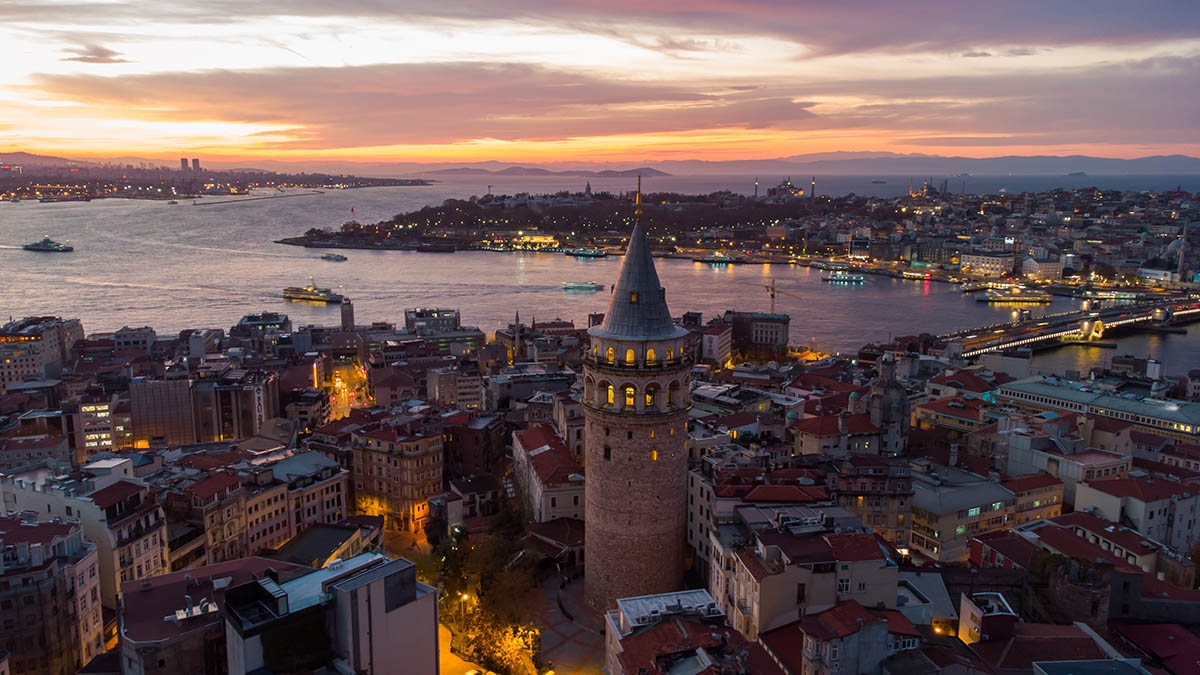
Splendid “Türkiye” never disappoints
ABOVE: Ariel view of Turkey's largest city, Istanbul, at dawn from the European part of the city. (PHOTO: iStock)
Türkiye’s Culture Route Festivals in Istanbul & Ankara are a treasure trove of arts and culture.
One of my favourite destinations in the world is “Türkiye.” I say “Türkiye,” not “Turkey,” because in June, the United Nations formally agreed to the request from Turkish foreign minister Mevlut Cavusoglu to officially change the country’s name from “Turkey” to “Türkiye.” The request was part of a rebranding campaign initiated last year by Turkish President Recep Tayyip Erdogan, who said that the name “Türkiye is the best representation and expression of the Turkish people’s culture, civilization, and values.”
Most Turks already know their country as Türkiye. However, the anglicized form Turkey is widely used, even within the country. (As the state broadcaster TRT explained, one of the reasons for the image rebrand was the association with the bird traditionally associated with Christmas, New Year, or Thanksgiving).
The rebranding doesn’t change the fact that Türkiye is one of the great travel destinations in the world and a place that should be on every traveler’s bucket list. Located in the Mediterranean and connecting the continents of Europe and Asia that are separated by the famous Bosporus, Türkiye has always been a hub for cultural interaction and home to varying climates. It inspires visitors today with its history, nature, and gastronomy that reflect the diversity of civilizations for centuries.
Türkiye has a distinctive understanding of art and fashion, which is the synthesis of tradition and modernity, and its extremely dynamic shopping and entertainment life attracts visitors from all over the world. It remains the crossroads of cultures, where east meets west socially, geographically, musically, artistically, in fashion, sport, and business. This democratic country has deep historical roots embedded in centuries of sophisticated governance, initially by Anatolian civilizations, then by Christians, followed by the Sultans and Ottoman Empire, and later, via its modern-day transformation led by the great Mustafa Kemal or Atatürk. One of the great figures of the 20th century, Atatürk rescued the surviving Turkish remnant of the defeated Ottoman Empire at the end of World War I. He united the Turkish people against invading Greek forces who sought to impose the Allied will upon the war-weary Turks and repulsed aggression by British, French, and Italian troops. Over the next two decades, as President of the new republic, Atatürk created a modern state that would grow under his successors into a viable democracy.
Türkiye’s seven distinct regions (Marmara, Aegean Region, Southern Mediterranean, Black Sea of Turkey, Central Anatolia, South Eastern Anatolia, Eastern Anatolian) include the volcanic landscapes of Cappadocia, the incredible beaches in the south in Antalya, Troy, the Bosporus Sea, Ölüdeniz beach and Babadağ (Mount Baba), the Gallipoli peninsula, Aspendos, the Sumela Monastery along the Black Sea Coast, historic Gaziantep and the Zeugma Mosaic Museum, the Istanbul Grand, the Istanbul Topkapi Palace, The Blue Mosque, the Hagia Sophia, Ephesus and the ancient ruins of Pergamum in modern-day Bergama. There is so much to see that it can be overwhelming when trying to figure out where to go in this land that has it all: a rich and multi-layered culture, natural beauty, wonderful people, and food to die for.
My trip took me to Türkiye’s largest culture and art event, the Beyoğlu and Ankara Culture Route Festival in Istanbul and Ankara, which celebrate the two cities’ cultural, architectural, and historical heritage. This annual affair runs from the end of May through mid-June and features more than 2000 events with over 6000 performers in the spectacular port city of Istanbul and the historic capital Ankara. These festivals are literally a cultural treasure trove to showcase the best of Türkiye. And there is something for everyone’s tastes, whether it’s visiting the world-class museums in both cities, visiting the opera, going to a world music concert, or taking in the animated festival or some of the dozens of art exhibits that are part of the route. Many Ankara and Istanbul streets also host free open-air concerts during the two-week extravaganza.
ABOVE: Galata Tower, is one of the oldest towers in the world, was first built by the Byzantine Emperor Justinianos in 507-508 AD. (RIGHT) Located on the European shore of the Bosporus strait, Galataport is a cruise ship port and the newest social living area in Istanbul with culture and arts, food and beverage, museums, historical sites. (PHOTOS: Turkiye Tourism)
Beyoğlu (Istanbul) Culture Route
Istanbul is in the Marmara region of Türkiye. Once called Constantinople, it uniquely sits on two continents. It is the home of landmark buildings like the Hagia Sophia, Blue Mosque, and Topkapi Palace. Since it was conquered by the Ottoman Sultans in 1453 from the Byzantine empire, the Turkish economy continues to revolve around Istanbul. The European side belongs to the Thrace area, but locals use ferries to cross over to Asian Istanbul daily. Surrounded by the Bosporus straits, the Golden Horn, and the Sea of Marmara, other important places include Gallipoli and the Dardanelles, feature points during the Turkish war of independence.
The Beyoğlu (Istanbul) Culture Route is four kilometres long and includes 84 locations from the Atatürk Cultural Centre (AKM) to Galataport, including Atlas Cinema and Istanbul Cinema Museum, Galata Tower, Galata Mevlevi Lodge, Tarık Zafer Tunaya Culture Centre, Garibaldi Scene, Tophane- Amire Arts and Culture Centre and Taksim Mosque Culture and Arts Centre.
ABOVE: The collection at the AKM Library in the Atatürk Cultural Centre focuses on music, arts, architecture and design. (RIGHT) Atatürk Cultural Centre’s iconic front façade facing the Taksim Square is the Opera Hall. (PHOTOS: Turkiye Tourism)
Two highlights of the visit to the AKM were the digital exhibition “Rumi Dreams” by Turkish artist Husamettin Kocan and a concert in the theatre later that evening by renowned international singer and Greek artist Glykeria “whose Rebetika Songs” are very popular in Turkey. AKM has a superb restaurant called DIVAN, a must before the show.
You’ll need several hours in Istanbul to experience the wonders of Istiklal Street with its shops, restaurants, museums, bars, and exhibits. Stop by the Bedri Rahmi Eyuboglu collections and the Grand Pera Cercel D’orient exhibition. Cinephiles will find dropping in at Istanbul’s Atlas Cinema Museum, a great place to spend a couple of hours learning about the many contributions of Turkish cinema, playwrights, and actors to the profession over the past century.
Even though it is ‘touristy,’ a visit to the Galata Tower is worth it because once on top, you can get a 360-degree view of spectacular Istanbul in all its glory.
ABOVE: Tourist and locals alike head to Istiklal Street (which means “Independence Avenue”) in the heart of Istanbul for its shops, restaurants, cafes, street shows and more. (PHOTO: Turkiye Tourism) (RIGHT) View from the historic Liman Restaurant in the Galataport.
Most people have heard of the famous Whirling Dervishes, but seeing them chant, dance, and perform live at the Galata Mevlevi Lodge was a real trip highlight and unforgettable cultural moment.
Galataport is the new port development on the Bosporus in the Istanbul city centre that offers access to one of Istanbul’s most pristine walks along the 1500-metre-long Karaköy coastline. You’ll see breathtaking views with sunny skies and turquoise waters that illuminate the surrounding architectural beauty of the area. (Below the promenade is Galataport's underground terminal, which is also accessible to visitors). Foodies love Galataport’s collection of restaurants, coffee shops, and bars which offer a variety of the most exquisite tastes and recipes from around the world and offer a healthy serving of incredible Turkish cuisine that includes the best of Istanbul street food for all tastes and budgets. A local favourite is the historic Liman Restaurant, one of Istanbul’s most popular restaurants.
The 6th-century Hagia Sophia (officially the Hagia Sophia Grand Mosque) is easily recognizable with its vast dome and colourful marble columns. It was built on the site of the Eastern Roman Empire's acropolis by Emperor Justinian (532-537 AD). The monument presents superbly exquisite Eastern Roman mosaics and fine examples of unique Ottoman calligraphy. Hagia Sophia was inscribed on the UNESCO World Heritage List in 1985, under the title Historic Areas of İstanbul. As one of the oldest holy shrines in the world, the awe-inspiring edifice today serves as a mosque to the common culture of humankind.
The word hippodrome comes from the Greek hippos (horse) and dromos (way). The Hippodrome of Constantinople, located in Sultanahmet/Istanbul, was constructed under the reign of Eastern Roman Emperor Septimus Severus AD. 200. It was a public arena for gladiatorial games, chariot races, official ceremonies, celebrations, protests, the public torturing of prisoners and convicts, and other civic matters. The Hippodrome continued to function during the Roman (203-330 CE), Byzantine (330-1453 CE), and Ottoman (1453-1922) periods. Over time the Hippodrome would be enlarged and connected to the Great Palace of Constantinople that today lies underneath the Blue Mosque.
In Istanbul, there are many incredible restaurants, but if you want to have an idyllic evening right on the water, go to Lacivert Bar/Restaurant. The food, service ambiance, and view all come together to make for a memorable dining experience. Another great dining experience combining the distinctive and succulent tastes of Mediterranean and world cuisines is at the sprawling roof terrace IZAKA Restaurant & Bar at the CVK Park Bosporus Hotel Istanbul near Taksim Square. The food is as spectacular as the stunning panoramic view from the historic Golden Horn Peninsula all the way to the Bosporus Bridge.
ABOVE: The Grand Bazaar in Istanbul is the oldest and largest covered market in the world.
Istanbul is also the site of the famous Istanbul Grand Bazaar, where you can spend hours exploring countless stores and stalls selling everything from the finest Turkish rugs, spices, and teas to modern-day fashions. Outside and all around the Bazaar, you’ll find restaurants, cafes, and shops. It is a must-see destination on any trip to the capital. For a great lunch, stop by Hamdi restaurant, one of the best kebab places in Istanbul. You won’t be disappointed.
The Ankara Culture Route
Ankara is the capital city of the Turkish Republic at the heart of Anatolia on the eastern edge of the great, high Anatolian Plateau, at an altitude of 850m. (It is located 200 km south of the Black Sea). With its yellow wheat fields, young volcanoes, and infinite steppe, the plateau offers a stern landscape though a look at its history reveals millennia rich with emotive episodes. Because of its location in the centre of the country, the region has been a historical junction of major trade routes and a crossroads of migratory streams. The Hittite Empire, one of the superpowers in antiquity, emerged here in Central Anatolia. The Hittites distinguished themselves not only through the civilizations they created but also through the state structure they evolved and their tolerance and respect for human rights. Throughout its history, Ankara has been an important cultural, commerce, and arts center and a major stop along the Silk Road between east and west. Due to its strategic position, Ankara was chosen as the headquarters of the War of Independence by Mustafa Kemal Atatürk. Hence, Ankara was declared the capital of the new Republic of Türkiye on October 13, 1923. With the proclamation of the Turkish Republic, Ankara developed swiftly as the capital city that today remains the second biggest metropolitan city in Türkiye.
ABOVE: An art exhibition in the foyer of the CSO Ada in Ankara. (RIGHT) Unlike other multi-purpose concert halls, the CSO Concert Hall is a purpose built for symphony orchestras. (PHOTO: Turkiye Tourism)
The architecture of the city reflects its history. The Ankara Culture Route presents exceptional architectural and cultural examples of pre-Republican and Republican periods and the new contemporary Ankara. There are historical sites and remains from the Anatolian civilizations, Roman, Byzantine, and Ottoman eras.
On the arts and culture side, Ankara has much to offer. It is home to one of the oldest orchestras in the world, the Presidential Symphony Orchestra, founded in 1826. CSO ADA ANKARA is a music campus that opened in 2020 in the center of Ankara, between Ankara Castle and Anıtkabir. This impressive music campus, with its minimalist wood, glass, and concrete design, is quite spectacular. It has a 2023-seat concert hall with incredible acoustics, a 500-seat blue hall, a 600-seat historical hall, an exhibition hall, a gift shop, and an open concert hall.
ABOVE: A view from the Atakule Tower in Ankara. (RIGHT) The Ankara Painting and Sculpture Museum.
Several of Ankara's museums that showcase Anatolian history are housed in renovated Ottoman buildings. Among the museums, art galleries, historic buildings, and monuments along the 4.7-kilometre-long Ankara Culture Road Festival are the Ankara Castle, Museum of Anatolian Civilizations, and the Ankara Painting and Sculpture Museum, Hacı Bayram Veli Mosque, Hamamönü, Temple of Augustus and the Roman Bath, the Ethnography Museum, the Bank Economic Independence Museum, the Ziraat Bank Museum, the PTT Stamp Museum, and the CSO Ada Ankara.
Much of the route is in the cosmopolitan Çankaya district of Ankara, which is home to the Grand National Assembly of Turkey and nearly all foreign embassies. Çankaya is a cosmopolitan district and considered Ankara's cultural and financial centre. To get a sense of the size and breadth of Ankara, visit one of its most important landmarks, the Atakule Tower. Built on a hill in the middle of the city, the massive communications and observation tower stands at an imposing height of over 408 feet tall and can be seen from almost anywhere in the city. The observatory deck at the tower's top section offers spectacular 360-degree views of the city.
To truly understand modern-day Turkey and the Turkish people, an absolute must-stop is the Atatürk Mausoleum, one of Turkey’s most notable examples of 20th-century modern architecture, which also sits high on a hilltop. Designed by Turkish architect Emil Onat, this colossal complex is the final resting place of Mustafa Kemal Atatürk, the founder and first president of the Turkish Republic. Prior to the opening of this site in 1953, Atatürk’s remains were housed in Ankara’s Ethnographic Museum. The reverence and respect Turks have and continue to show for Atatürk, and his legacy are on full display here. A grand staircase, the Path of Honour, is flanked by reclining Hittite lions, leading up to the Court of Honour, where the mausoleum and a museum about Atatürk’s life come together. Thousands of Turkish school children visit the site daily to learn about their history while citizens and tourists come to pay their respects.
ABOVE: The Atatürk Mausoleum is the final resting place of Mustafa Kemal Atatürk, the leader of the Turkish War of Independence and the founder and the first President of Republic of Turkey. (RIGHT) School children visit Anitkabir (mausoleum) to learn about Atatürk.
Like Istanbul, Ankara has exceptional hotels, but one that stands out is the JW Marriott Istanbul. It is centrally located, has excellent services and restaurants, and offers a wonderful respite after a day of touring in Ankara.
There is much to do in Türkiye from touring and recreational activities to arts and cultural enrichment. Of course, one of the best things about the country is the food, and when you visit, you’ll spend lots of time sampling Turkey’s delicious specialties that are at the very heart of Turkish culture and life. Whether it’s the famous baklava or other deserts, Turkish coffee, raki or Aegean vegetables layered in olive oil, spicy Anatolian kebabs, incredible fish and seafood dishes, eating and enjoying Turkish cuisine will be a big part of the cultural awakening you will become absorbed in when you visit Türkiye.
For more information on travel in Turkey, visit Go Turkey Tourism | Tourism and Travel Guide
For information on flying to Turkiye, read our article Upgrading on Turkish Airlines brings flight comfort to another level
Unless otherwise noted, all photos are by Dan Donovan

